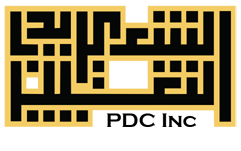
The Dream Drone
Conflict-heavy regions are typically deprived of access to international aid, as seen in the current Syrian landscape. This is due mainly to the risk and inaccessibility of aid delivery. Entire communities have been held under siege, cut off from food and basic medical supplies. In fact, it is estimated that over 600,000 Syrians live in regions that are difficult for international aid agencies to access. Thus, the communities that are geographically distant from friendly borders, such as the refugee population in Yarmouk, Damascus, are in need of practical solutions for the delivery of aid. Mark Jacobsen, founder of the Syrian Airlift Project (SAP), has one such solution.
His solution is to look to the sky.
In March of 2015, Jacobsen and his team at the Syria Airlift Project tested their product: a small drone that can maneuver long distances, carry necessary items, and which is difficult to detect. Jacobsen’s team consists of PhD candidates from Stanford who, together with policy experts and ex-military personnel, successfully created what I would call a “dream drone.” The benefits of drone-provided aid are potentially enormous. It could transform the international aid paradigm and, of course, save lives.
The current international aid system has had a focus on short-term assistance and emergency aid. In fact, short-term assistance in the form of deliverable foodstuffs, medicines, or other provisions is a common “solution” to many problems. The issue with this aid system is that by focusing on short-term assistance and turning humanitarian aid industry (as a whole) into a delivery service, communities in post-conflict zones remain dependent upon aid and aid providers. No growth is engendered, the situation has not changed, and communities remain reliant on the sustenance provided by international aid agencies. Given this, one might wonder how SAP would transform or change the effectiveness of this field, especially since SAP aims to be a delivery service.
The Syria Airlift Project is special because it delivers emergency aid to communities that lack other options for self-subsistence as the result of their isolation in a conflict zone. These are the communities that emergency aid should be reaching. Post-conflict societies have both short-term and long-term considerations, and their short-term activities should aid rather than inhibit their long-term goals. Conflict zones, specifically where food is used as a weapon, however, necessitate immediate concerns; there can be no long-term goal within besieged communities except survival. SAP is a tool that allows emergency aid to be delivered to the most vulnerable communities in active conflict zones. Should this be implemented with success, it might change the standard for when and how emergency aid is provided.
There is an old adage that expresses that any tool or scientific discovery created to help people will eventually be used as a weapon. In the case of drones, which have already been used as weapons, this project seeks to use what is generally considered a nefarious tool to instead save lives and do some good. This is the most obvious benefit of this project– dropping foodstuffs and medicines on communities cut off from international aid. Beyond any political ramification, saving lives is the ultimate goal. If drones can be and are used to kill people, then it is time for the pacifists to harness their power for good.
